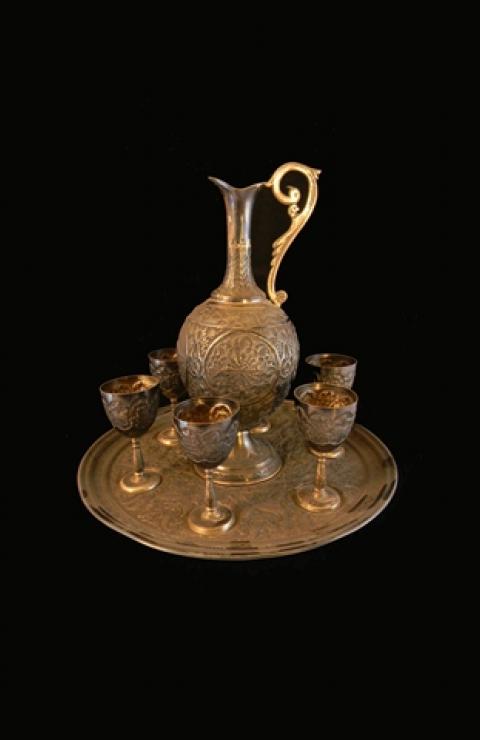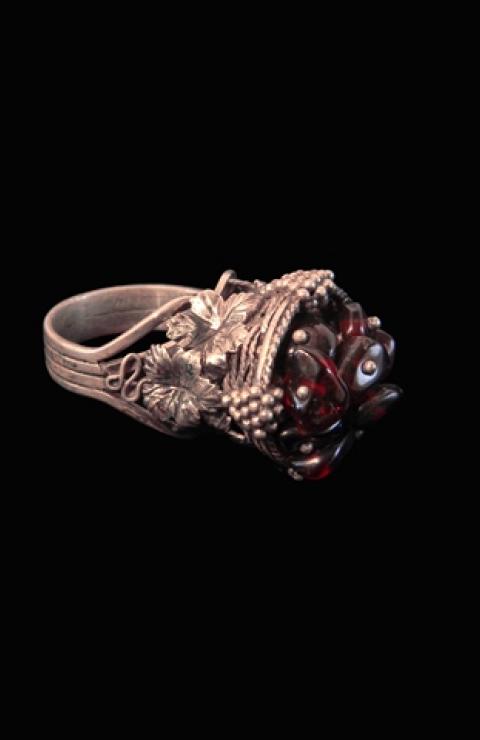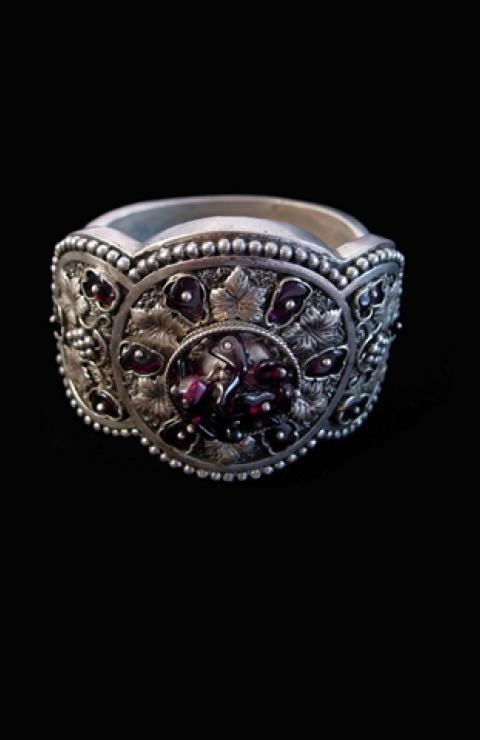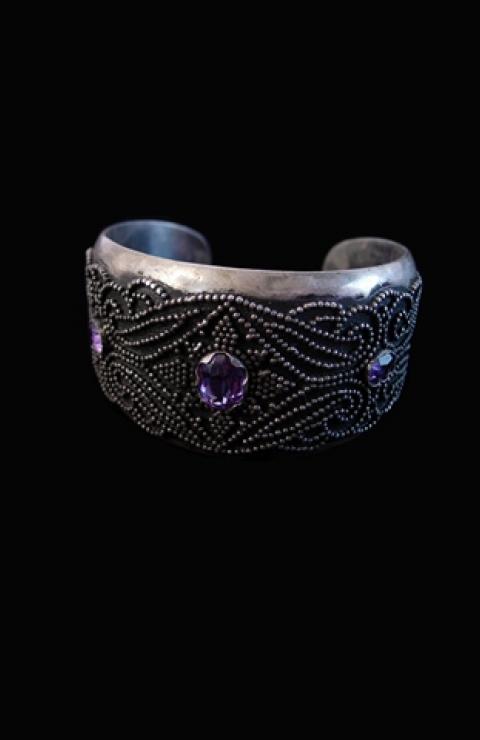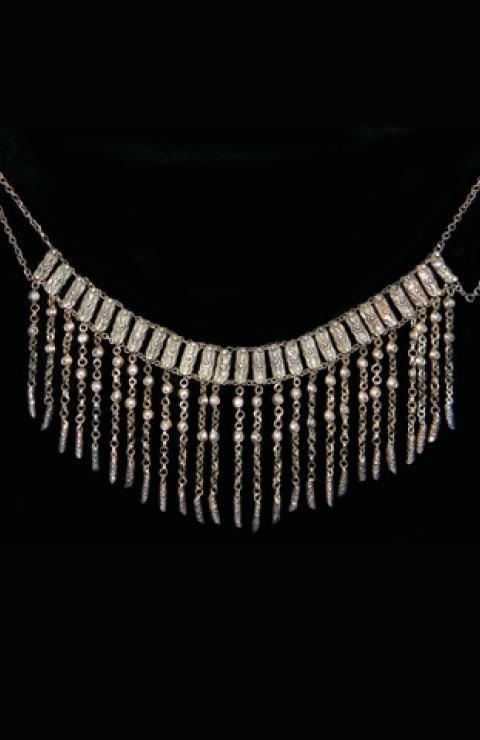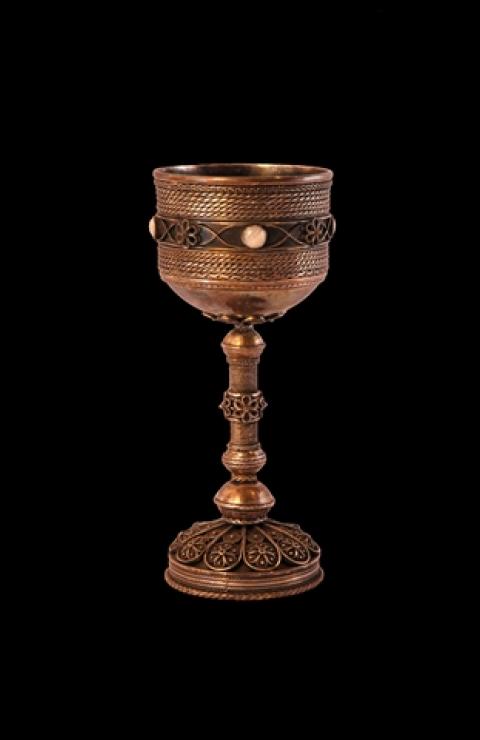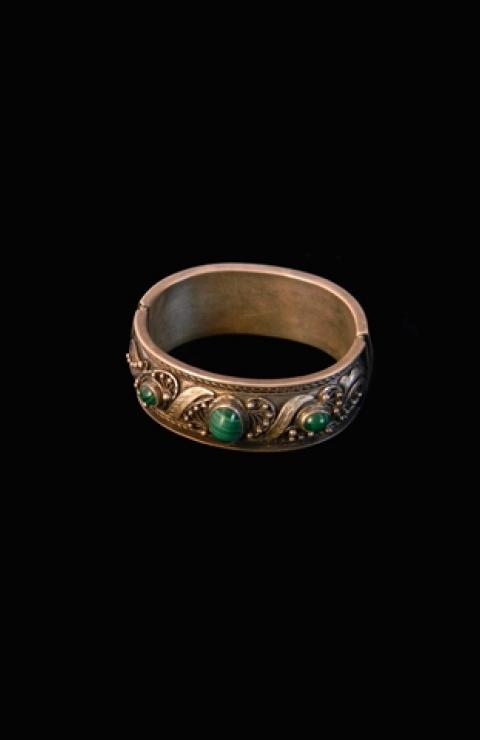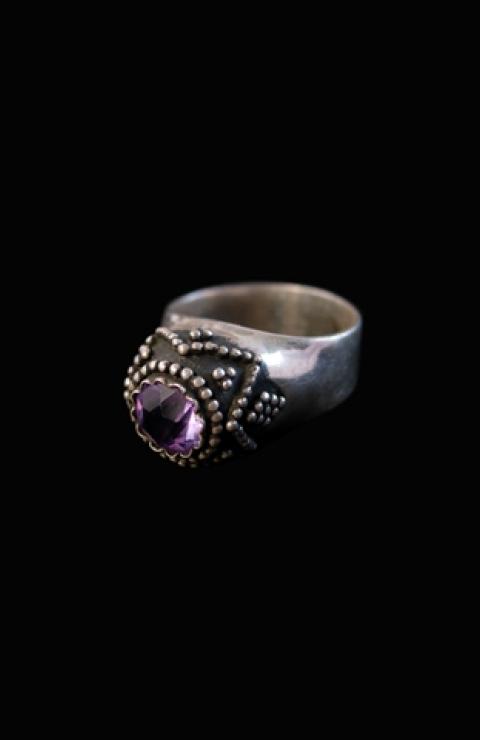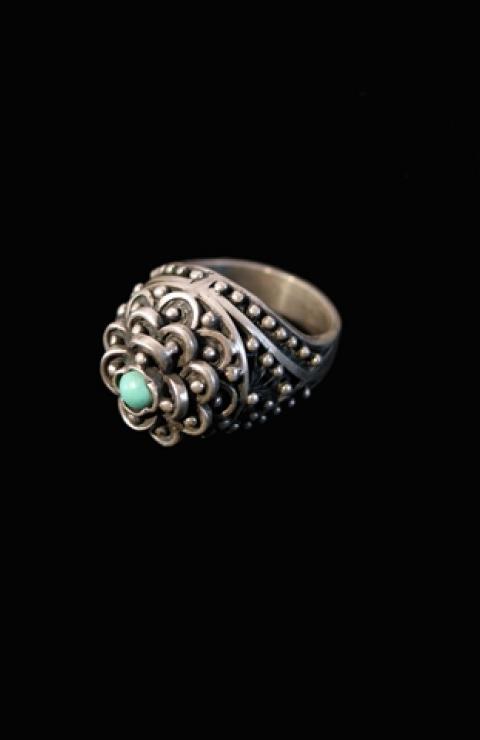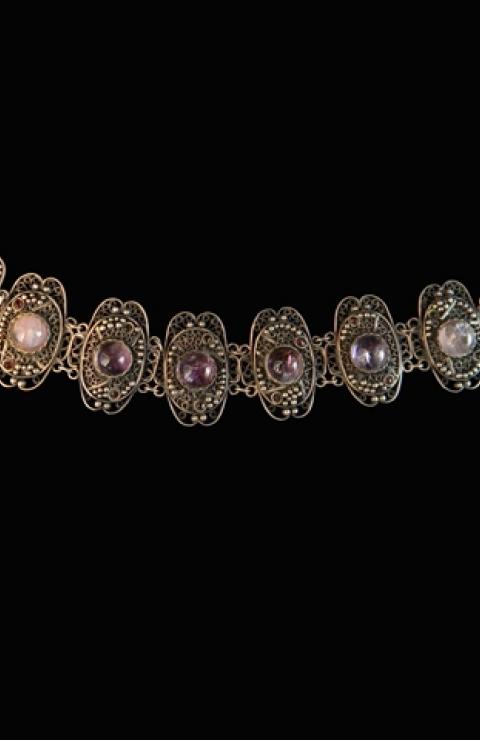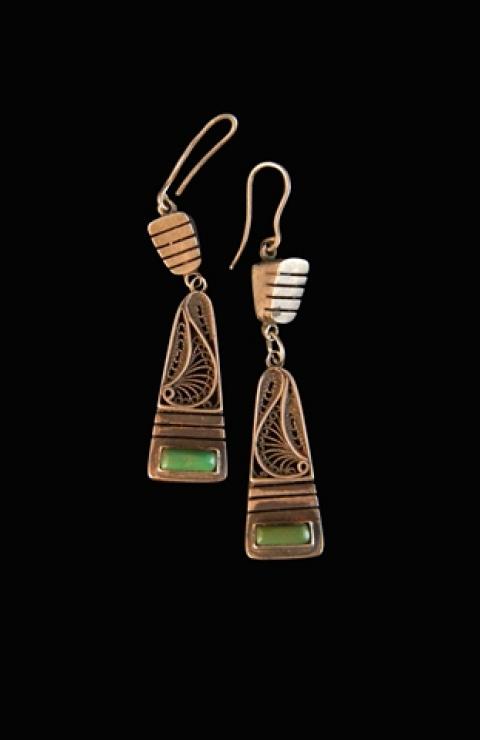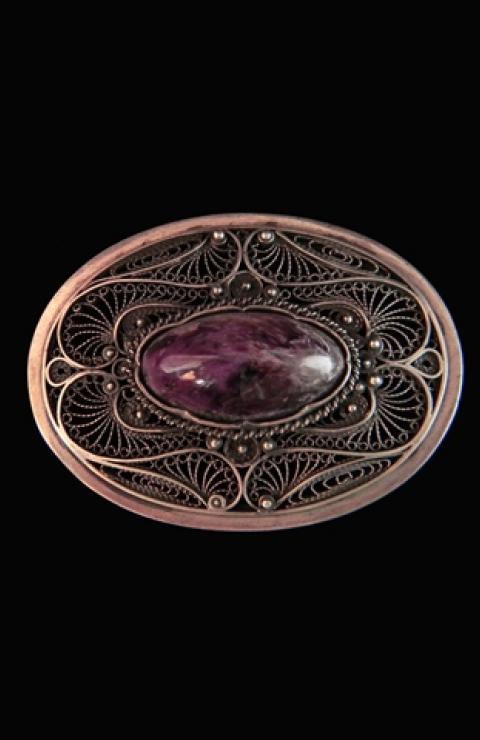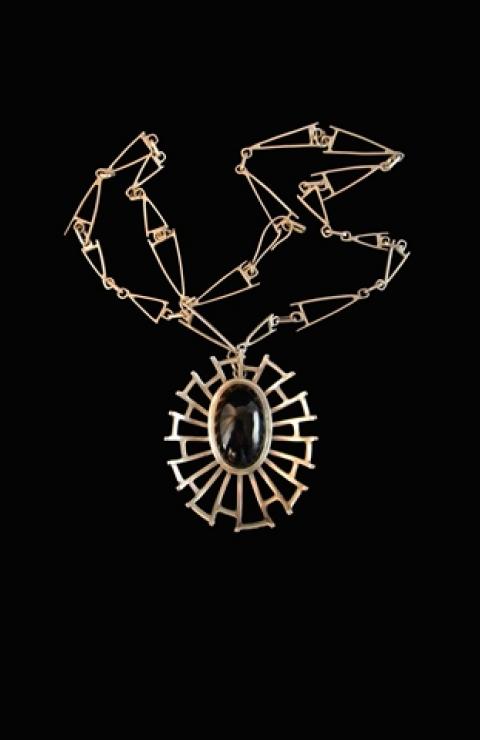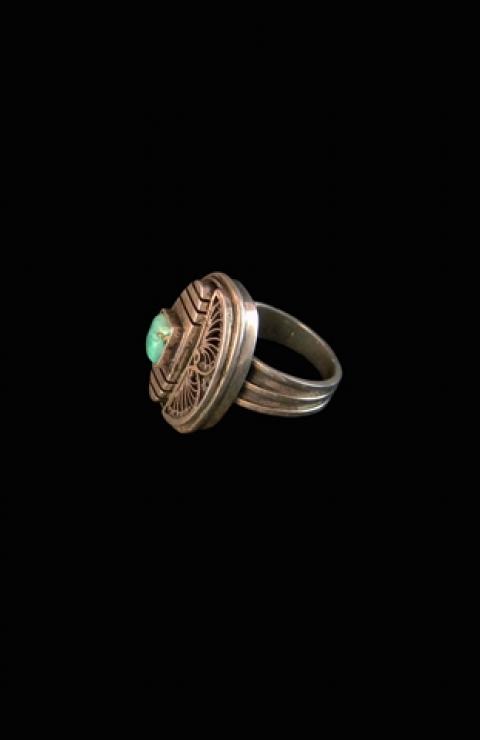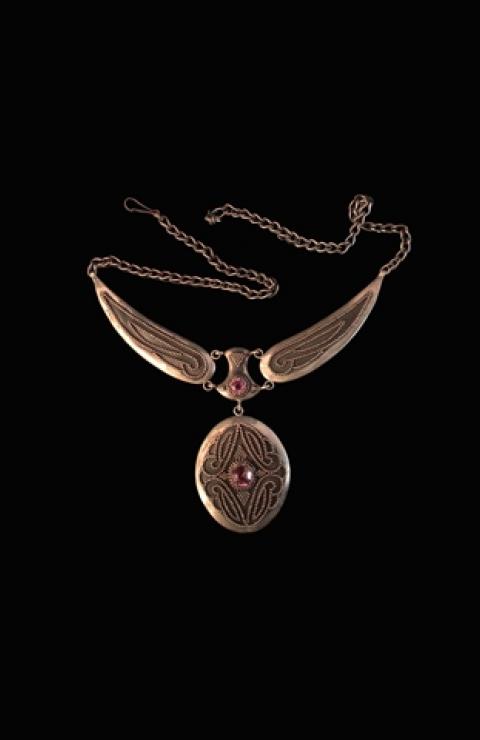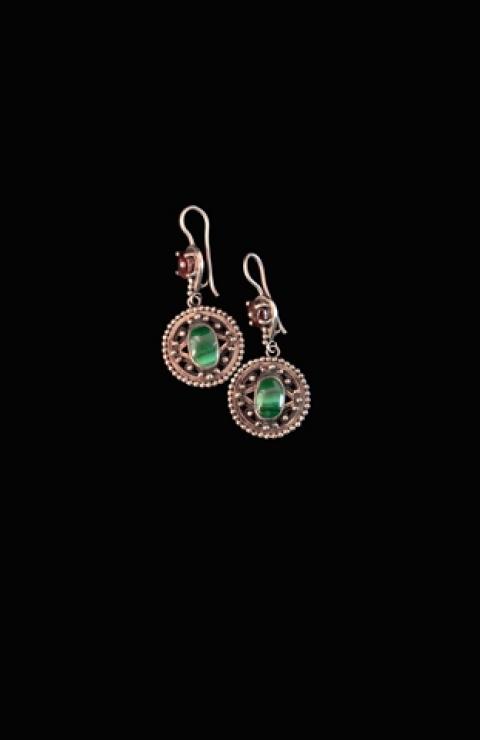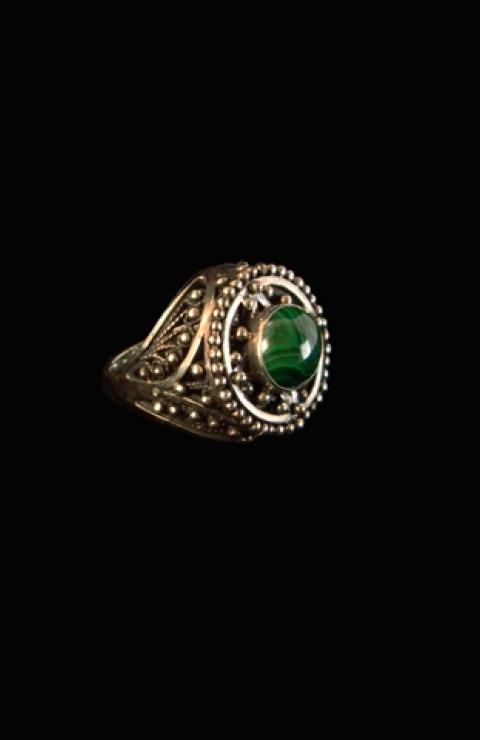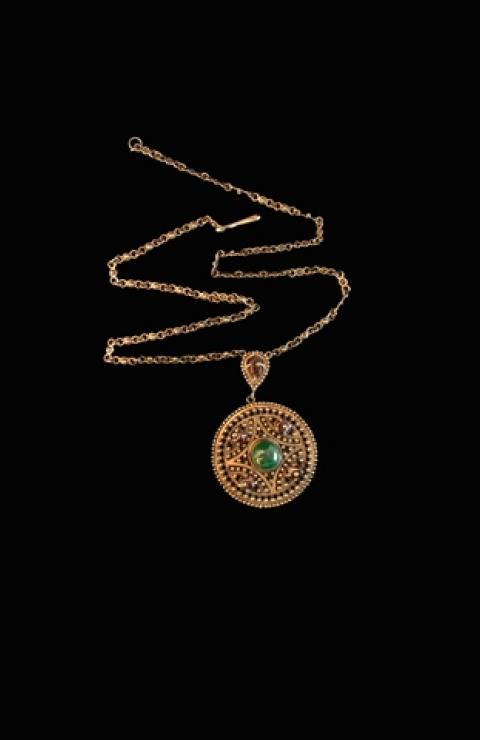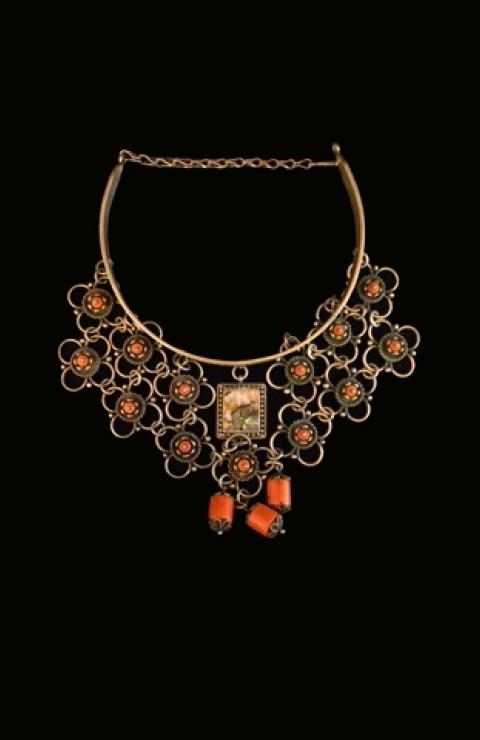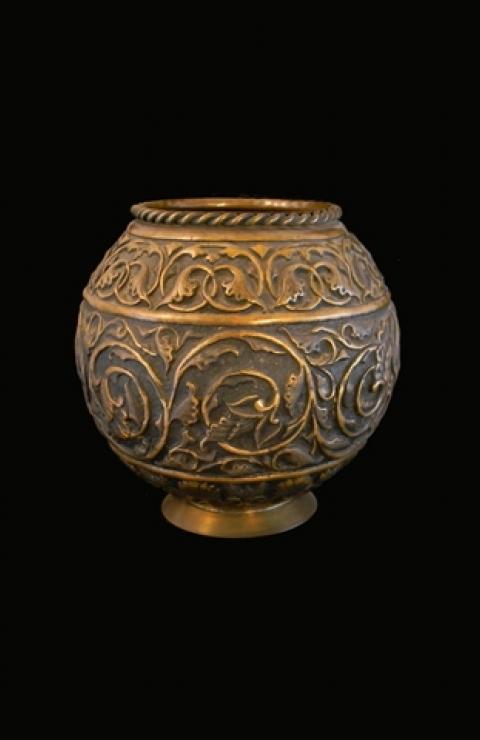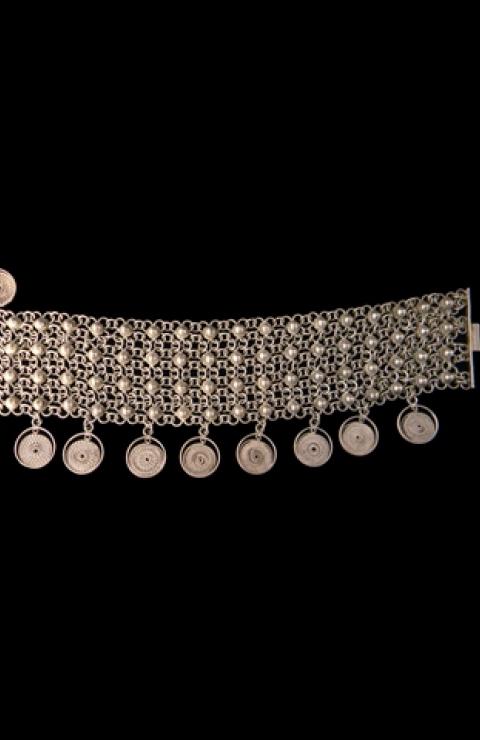The art processing of metal is one of the oldest and the most widespread branches of the Armenian folk art. From the earliest times on the base of blacksmithing some other separate branches appeared: copper-smithing, gold-smithing.
The art processing of metal was widely known in Medieval centuries which was conditioned by creating church items: religious relics and manuscripts. In XVII-XIX centuries the famous centers of metal treatment were Van, Bitlis, Akhaltskha, Alexandrapol and other centers with Armenian population. Church items (vases, cups, censers, candle-sticks, trays) also utilitarian items made of copper and other metals (cauldron, mugs, trays, cigarette-cases, bags, belts, adornments) have been created in these centers. The production was also exported to other countries.
Different ways of art processing of metal such as chasing, melting, casting, filigree, gilding, enameling, niello, incrustation with precious and semiprecious stones were used by Armenian masters. The belts made in Vaspourakan region were so different from that of made in Zangezour or Akhaltskha technically, designs, ornaments and style.
During the Soviet Power the art processing of metal developed newly. The best traditions of art processing of metal are inherited by the contemporary masters Vahan and Gabriel Hatsagortsyan, Hrachik Stepanyan, Zhirayr Chuloyan, Gurgen Torosyan. Preserving the traditional ways of metal processing they find out new ways, methods, constructions and designs.
The creations of Armenian masters are displayed in the hall of art processing of metal at H. Sharambeyan Museum of Folk Arts. These samples have been displayed at different exhibitions in many countries.
